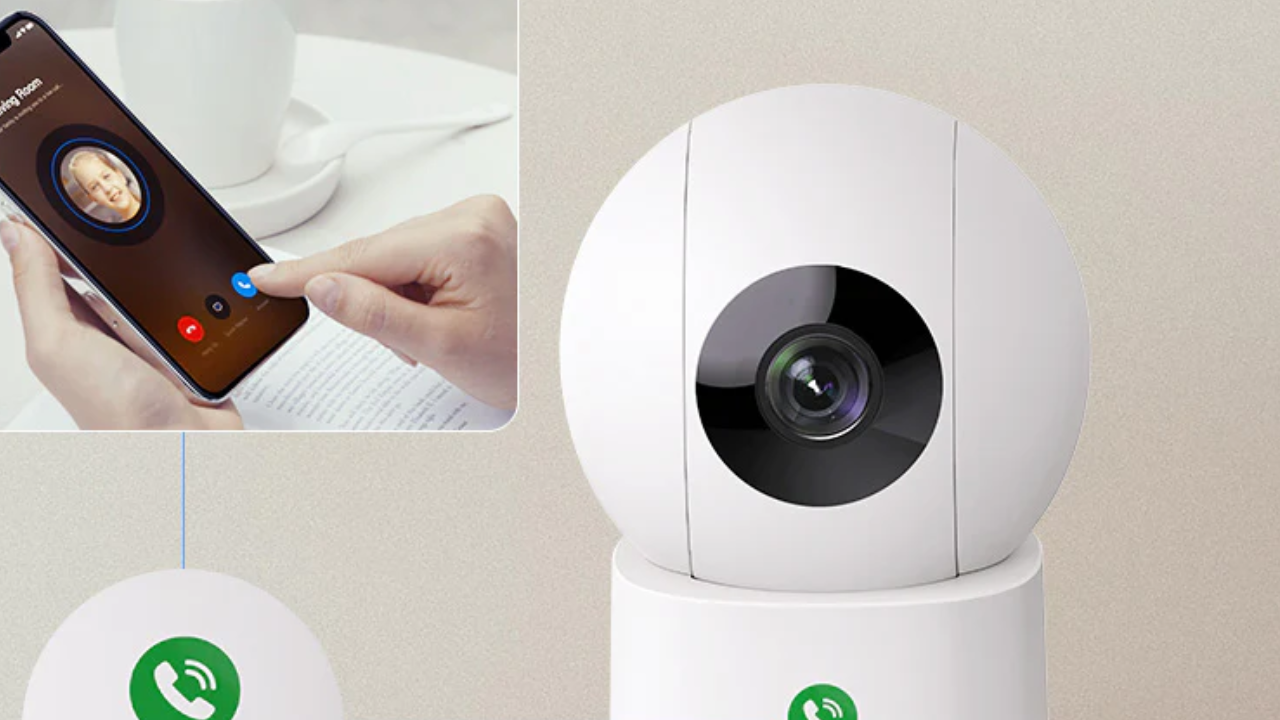Indoor cameras must be cleaned regularly to work optimally and provide clear, uninterrupted surveillance. Dust, dirt, and debris can accumulate on indoor cameras over time, reducing image quality and hindering motion detection capabilities. Dust particles might accumulate on the camera lens, obstructing the vision and resulting in glare or distortion in the recorded film.
Cleaning interior cameras not only enhances image clarity but also extends their lives and prevents potential problems. Dust and dirt can build up inside the camera's components, such as the lens mechanism or motion sensors, causing operational issues or hardware damage if left unchecked. Cleaning your indoor cameras regularly can help reduce the danger of technical issues and assure long-term performance.
Furthermore, maintaining clean inside cameras is critical for security reasons. A filthy or clouded camera lens may miss key details during critical moments, jeopardizing the usefulness of your surveillance system. Regular cleaning of indoor camera improves their visibility and ensures that they can accurately record and monitor your inside surroundings, giving you peace of mind and increased security for your home or business.
Ways to Safely Clean Indoor Cameras
Cleaning indoor cameras is essential not only for preserving their functionality but also for maintaining clear and uninterrupted surveillance footage. In this detail, we'll explore effective and safe methods for cleaning indoor cameras.
Precautions Before Cleaning
Before beginning the cleaning procedure for your indoor camera, take a few preventive actions. Begin by turning off and unplugging the camera to avoid any electrical problems. Remove any memory cards or devices connected to the camera. When cleaning, use a soft, lint-free cloth to avoid scratching the lens or housing. Finally, avoid using harsh chemicals or abrasive materials that may damage the camera's components.
Dust Removal
There are several methods for properly removing dust from your indoor camera. To begin, utilizing compressed air in short bursts can help dislodge particles from the camera lens and housing. Alternatively, a soft-bristled brush or camera lens cleaning brush can be used to gently remove dust without causing damage. These methods keep your camera's lens clear and free of obstructions, allowing for sharp and uninterrupted surveillance footage.
Cleaning the Lens
To ensure optimal performance, clean your indoor camera's lens with care. Start by moistening a microfiber cloth with a small amount of lens cleaning solution or isopropyl alcohol. Gently clean the camera lens in a circular motion, beginning in the center and working outward. Finally, use a dry microfiber cloth to wipe away any remaining moisture, leaving a streak-free finish and clear surveillance footage.
Cleaning the Housing
Cleaning the housing of your indoor camera is critical for keeping it functioning and attractive. Begin by wetting a delicate cloth with water or a gentle detergent solution. To remove dirt and grime, gently wipe off the camera housing and visible surfaces. To remove stubborn stains or residue, apply a small amount of isopropyl alcohol to the cloth. To avoid water damage to the camera's internal components, keep the cloth from getting too wet.
Cleaning the Microphone and Speakers
The microphone and speakers on your indoor camera must be kept clean to ensure excellent audio performance. To begin, use a soft brush or compressed air to clear any dust or dirt from the microphone and speaker grills. To remove fingerprints and smudges, wipe the surfaces with a moist cloth. To avoid damaging the internal electronics, do not let moisture reach the microphone or speaker apertures.
Regular Maintenance Routine
A regular maintenance schedule for your indoor camera maintains its longevity and continuous functioning. Set aside time for cleaning, examining, and fixing any issues that arise. Inspect the camera regularly for signs of wear, damage, or malfunction. To ensure maximum visibility and coverage, keep the camera's surroundings clean and clear of obstructions. By following a proactive maintenance routine, you may extend the life of your inside camera and provide dependable security surveillance.
Summary
Cleaning indoor cameras is a simple but important operation that ensures their longevity and performance. By following these safe and effective cleaning methods, you can keep your inside cameras in good working order and enjoy clear and uninterrupted surveillance footage. Remember to be cautious and avoid using harsh chemicals or abrasive items that could damage the camera's components. With regular maintenance and care, your inside cameras will continue to give dependable protection and peace of mind.


